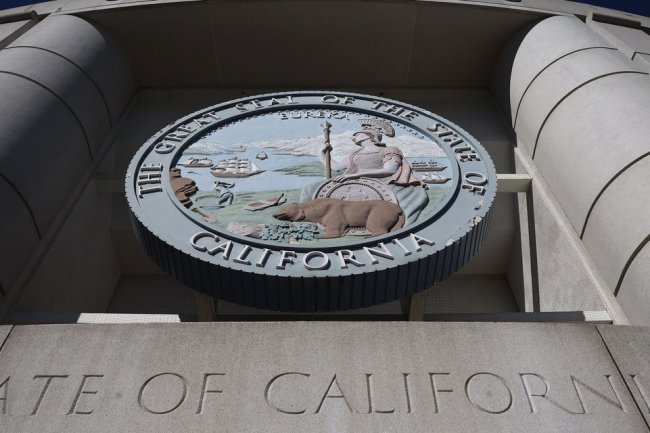Senators Want Public to Know What’s in UFO Files
Lawmakers say JFK-style declassification effort will help address concerns about aerial phenomena This image is from a report of a UFO sighting in Riverside, Calif., in 1951. Photo: National Archives/U.S. Air Force By Isaac Yu and Simon J. Levien July 21, 2023 10:00 am ET WASHINGTON—Congressional interest in UFOs is reaching new heights. The latest version of the Senate’s defense-policy bill contains bipartisan provisions designed to gather and declassify documents related to unidentified flying objects, including mysterious aerial phenomena of this world—and potentially others. And next week, a House Oversight subcommittee is set to hear from witnesses who claim to have seen evidence of crafts of nonhuman origin, as Congress increases scrutin


This image is from a report of a UFO sighting in Riverside, Calif., in 1951.
Photo: National Archives/U.S. Air Force
WASHINGTON—Congressional interest in UFOs is reaching new heights.
The latest version of the Senate’s defense-policy bill contains bipartisan provisions designed to gather and declassify documents related to unidentified flying objects, including mysterious aerial phenomena of this world—and potentially others. And next week, a House Oversight subcommittee is set to hear from witnesses who claim to have seen evidence of crafts of nonhuman origin, as Congress increases scrutiny of the perplexing sightings.
While UFOs have drawn the public’s attention for decades, lawmakers have expressed heightened concerns after the shootdown of a Chinese spy balloon and several other objects over North America this year, as well as fresh claims about unexplained aircraft that appear to employ technology beyond known military capabilities.
“Sunlight is the best disinfectant,” said Senate Majority Leader Chuck Schumer (D., N.Y.) of the declassification plan for unidentified anomalous phenomena, or UAPs, the catchall term for UFOs. “It will be very helpful for the American people to see exactly what’s there. Because otherwise there are all sorts of rumors flying around.”
The Senate’s UAP provisions, part of its version of this year’s National Defense Authorization Act, would give federal agencies 300 days to hand over UAP-related documents to a newly established review board with the power to declassify them. The proposal is modeled after a 1992 law declassifying documents related to President John F. Kennedy’s assassination, requiring public release within 25 years.
The House passed its NDAA bill last week, largely along party lines. The Senate is expected to pass its version before the August recess. House and Senate lawmakers will meet privately in a conference committee to produce a compromise bill that must pass both chambers before heading to President Biden’s desk for his signature.

‘It will be very helpful for the American people to see exactly what’s there,’ says Sen. Chuck Schumer of the declassification plan for UAPs.
Photo: Tom Williams/cq Roll Call/Zuma Press
The UAP measure is backed by a bipartisan group of senators including Kirsten Gillibrand (D., N.Y.), Marco Rubio (R., Fla.), Mike Rounds (R., S.D.), Martin Heinrich (D., N.M.) and Todd Young (R., Ind.).
The measure would direct the National Archives to designate a records collection, then inquire with all government offices about what records fall under the UAP umbrella. Those records would be immediately disclosed to the review board overseeing the collection. If some records are sensitive, then the review board would have to justify why those records must stay classified.
“We think long term, just like with the JFK files, it would be better to have it in one location,” Rounds said of the collection plan.
Others doubted that the proposed system would yield anything interesting, because of the government’s desire to keep sensitive matters under wraps.
“C’mon, we’ll never see it,” said Sen. Josh Hawley (R., Mo.) about files related to UFOs. “The JFK stuff is a great example of that. We have a huge overclassification problem.”
While the continued release of JFK documents hasn’t put to rest theories about his assassination, some have yielded interesting disclosures. For instance, a memo from former FBI Director J. Edgar Hoover released in 2017 detailed his frustration over law enforcement’s failure to keep Lee Harvey Oswald alive long enough to get his confession.
Members of the House Oversight Committee will hold a hearing about UFOs next Wednesday. Witnesses include
David Grusch, a former intelligence official who has publicly claimed that the U.S. government has possession of aircraft of a nonhuman origin.Some in the government “don’t want this to come to light,” said Rep. Tim Burchett (R., Tenn.) at a press conference Thursday previewing the hearing.

A video display of a UAP during a hearing of the House Intelligence, Counterterrorism, Counterintelligence, and Counterproliferation Subcommittee last year.
Photo: Alex Brandon/Associated Press
U.S. defense officials released videos of unidentified flying objects last year during the first congressional hearing on the subject in more than half a century, as the Pentagon moved to assure the public it was being transparent about UAP reports.
“This is rather extraordinary,” said Stephen Bassett, a longtime lobbyist and UFO believer who has waited for this issue to bubble up on the Hill for two decades. “We have competition among various members of Congress, between the House and the Senate, to see who can be more aggressive on the UAP issue.”
The Pentagon last year established the classified All-domain Anomaly Resolution Office, or AARO. According to a report by the Office of the Director of National Intelligence, the AARO has reviewed 366 reports of the phenomena that most people refer to as UFOs. Of those, 171 “demonstrated unusual flight characteristics or performance capabilities, and require further analysis.”
Of the total discovered, 163 were balloons or balloon-like entities, and about six were categorized as clutter, which could include birds or airborne debris such as plastic bags, the report said.
SHARE YOUR THOUGHTS
How should the U.S. track reports of aerial phenomena? Join the conversation below.
The defense bill will also provide increased funding to the AARO, which was created in last year’s defense bill but didn’t receive enough funds because of a mistake in the appropriations fund. The measure, backed by Gillibrand and Rubio, doesn’t disclose either the original or new funding amounts, which are classified. The office works with other federal agencies to detect objects of interest near military installations or other areas of interest.
Amid the renewed scrutiny of UAPs, those with experience in the skies and in space were skeptical about whether extraterrestrials were involved.
Sen. Mark Kelly (D., Ariz.), a former astronaut, said there “are very legitimate questions from intelligent people” about aerial phenomena that the legislation is trying to address. “And then there are the folks that wear the tinfoil hats, and you’re not going to satisfy them,” he said.
“I never saw one,” Rep. Don Bacon (R., Neb.), a retired Air Force brigadier general, said of UFOs. “If I did, I’d have shot it down.”
—Lindsay Wise contributed to this article.
Write to Isaac Yu at [email protected] and Simon J. Levien at [email protected]
What's Your Reaction?






















